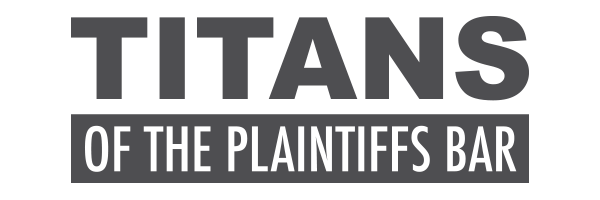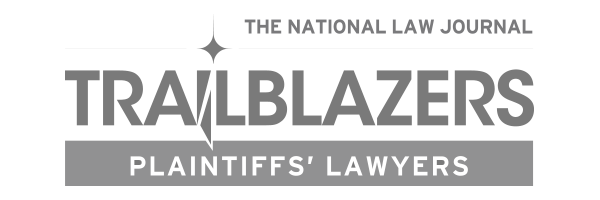Enfish and Bascom: The Federal Circuit Provides Welcome Relief to Owners of Software Patents
The past few years have been challenging for patent owners, particularly in the computer technology space. One of the more serious impediments to the successful assertion of patents rights in the current environment is the perception among some district courts and technology companies that the Supreme Court’s Alice Corp. v. CLS Bank International[1] ruling undermined the validity of “software” and computer-implemented patents generally. Recent developments in the Federal Circuit may change that perception, to the benefit of patent owners.
In Alice Corp., as we all know, the Supreme Court reiterated its longstanding rule that laws of nature, natural phenomena, and abstract ideas are not patentable under 35 U.S.C. § 101. The Court applied the analytical framework previously announced in Mayo Collaborative Services v. Prometheus Laboratories,[2] Inc., i.e., first determine whether the claims are directed to a patent-ineligible concept, and if so, then determine whether the claims recite an “inventive concept” sufficient to render them patentable. The Court held that the claims at issue were drawn to the abstract concept of intermediated settlement, and that the mere recitation of a generic computer to apply this concept in a conventional manner failed to add the necessary inventive concept. Accordingly, the claims were invalid.
Subsequently, the Federal Circuit and district courts released a flood of decisions invalidating patents on the ground that they lacked patent eligible subject matter. This flood carried forward into 2016, with very little sign of slowing. However, a series of recent Federal Circuit opinions appears to have begun to illustrate the bounds of patent ineligibility.
Previously, there was one lonely outlier, DDR Holdings, LLC v. Hotels.com, L.P.[3] In DDR, a jury found in favor of DDR and the defendants appealed, arguing (among other things) that the patents were invalid under section 101. The patents claimed a way of presenting a composite webpage that combined elements of a host website with content from a third-party merchant, so as to retain visitors who clicked on a hyperlink that would otherwise take them to the merchant’s website. The Federal Circuit held that the patents passed the Alice text because, even if they claimed an abstract concept (an issue that the court did not decide), they claimed a solution that was “necessarily rooted in computer technology in order to overcome a problem specifically arising in the realm of computer networks.” The court noted that DDR’s patents overrode the normal, expected manner in which the network would otherwise operate, distinguishing patents that broadly and generically claimed “use of the Internet” to perform standard business practices.
DDR appears to carve out a safe harbor for inventions that were directed to solving problems “arising in the realm of computer networks.” However, as 2015 rolled into 2016, the Federal Circuit did not issue a single opinion upholding the validity of computer or networking patents against a section 101 challenge.[4] So, as time went on it became less clear that DDR provided a safe harbor as opposed to a dead end.
Two recent Federal Circuit opinion have, finally, answered that question. In Enfish, LLC v. Microsoft Corp.,[5] the district court dismissed all of the asserted claims on summary judgment as reciting patent ineligible subject matter. The Federal Circuit reversed that ruling, finding that the claims were not directed to an abstract idea (Alice first prong), and that it was therefore unnecessary to reach the second Alice prong. The court held that the claims were not abstract because they were directed to an improvement to computer functionality (database structure) rather than a fundamental economic or conventional business practice.
The Enfish decision is notable for a number of reasons. First, the court decided the issue on the ground that the claims were not abstract, rather than on the second Alice prong that looks to whether a claim directed to an abstract idea recites an “inventive concept.” In doing so, the court went to considerable lengths to make it clear that the Alice inquiry does not mandate that “all claims directed to improvements in computer-related technology, including those directed to software, are abstract and necessarily analyzed at the second step of Alice, . . .”[6] The court looked to whether the “focus” of the claims was on an improvement to computer functionality, as opposed to the use of a computer as a tool to implement conventional business practices.
This is probably the most significant aspect of the case. It moves the goalposts considerably in the right direction from the patent owners’ standpoint, as most rulings applying section 101 to software cases have breezed past the first Alice prong and only really engaged on the second.
Second, the court’s rationale – that patents claiming improvements to computer functionality will likely not be abstract – is similar to the rationale underlying the DDR decision, and appears to be gelling into a useful rule of thumb.
Third, the court chided the district court for identifying the invention at too high a level of generality, and instructed courts to look to the claim language and the description of the invention in the specification to determine whether the claims are directed to an abstract idea. The court held that it is not enough that a claim may “involve” an abstract idea; rather, the courts are to look to whether the “character” of the claim “as a whole” is directed to an abstract idea.
By carving out room for software and hardware inventions that are directed to improvements in computer functionality, Enfish goes a long way toward containing the damage done to patent rights by the lower courts’ overly broad reading of the Alice decision. Yet more good news followed shortly.
A few weeks later, the Federal Circuit again reversed a district court dismissal of patent claims under section 101, this time under the second Alice prong. In Bascom Global Internet Services, Inc. v. AT&T Mobility LLC,[7] the patentee sued AT&T for infringing a patent claiming a particular way to filter Internet content. The Federal Circuit held that the patent was directed to the abstract concept of filtering content, because it is a longstanding, well-known method of organizing human behavior similar to concepts previously found to be abstract. However, the court rejected the argument that because the limitations recited generic components, the claim as a whole was not inventive; instead, the court looked for the “inventive concept” in the new and non-generic arrangement of the components. Because the arrangement of the components was new, and did not preempt the use of the abstract idea of filtering content on the Internet, the claims passed the second Alice prong and were therefore not invalid.
So do Enfish and Bascom mark an abandonment by the Federal Circuit of its prior authority finding software, computer and networking patents invalid under section 101? It appears not, as the Federal Circuit issued a ruling just five days following Enfish that found invalid under section 101 a patent directed to organizing digital images.[8]
Rather, DDR, Enfish and Bascom reflect the ongoing development of a federal common law of patent eligibility. None of them is doctrinally new, but each of them puts new flesh on the spare analytical framework bequeathed by Alice. In particular, by pushing back forcefully against the proposition that computer patents are inherently suspect under the Alice framework, the Federal Circuit has begun to lay the groundwork for an environment in which patent rights are once again accorded proper respect.
[1] ___ U.S. ___, 134 S.Ct. 2347 (2014).
[2] 566 U.S. ___, 132 S.Ct. 1289 (2012).
[3] 773 F.3d 1245 (Fed. Cir. 2014).
[4] With one arguable exception, in which the Federal Circuit in a footnote rejected a desultory patent ineligibility attack that failed to cite section 101 or any case law applying the provision. Carnegie Mellon University v. Marvell Tech. Group, Ltd., 807 F.3d 1283, 1297 n. 3 (Fed. Cir. 2015).
[5] 822 F.3d 1327 (Fed. Cir. 2016).
[6] Id. at 1335.
[7] ___ F.3d ___, 2016 WL 3514158 (Fed. Cir. June 27, 2016),
[8] In re TLI Communications LLC Patent Litigation, ___ F.3d ___, 2016 WL 2865693 (Fed. Cir. May 17, 2016).





